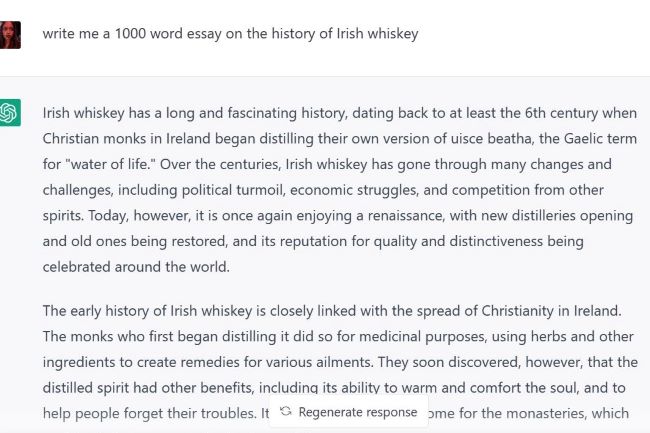Fans of ChatGPT adore the AI chatbot for several purposes, including its ability to generate detailed essays in a matter of seconds. However, one of its little-known limitations is that there is a word and character limit set on how much content it can output per query.
Reddit members and other AI enthusiasts have been discussing this for months, and luckily there are easy workarounds for this limitation by way of the prompts you can use.
What is the ChatGPT word limit?
ChatGPT’s parent company, OpenAI. set the word and character limit as part of its ongoing development of the AI chatbot, which is still in its research preview phase. Some of the issues with ChatGPT include its affinity toward “social biases, hallucinations, and adversarial prompts,” in addition to producing inaccurate content when the AI algorithm is overwhelmed or at a loss for information to process.
Similarly, ChatGPT might simply stop producing content when the request is too complex for the AI to handle. This happens at about 500 words or 4,000 characters. If you happen to give the chatbot a request for a specific number of words above 500, you might find that it cuts off midsentence somewhere after 500 words.
How to get around the ChatGPT word limit
To remedy this issue, you can use simple prompts such as go on, keep going, or continue. For example, I inputted the query write me a 1000-word essay on the history of Irish whiskey, and ChatGPT cut off midsentence at about 618 words. After inputting go on, ChatGPT continued generating my essay and ended at 1,043 words.
Another way to do this workaround is to set up your prompt with the word limit in mind. You can input write me the first 500 words of a 1000-word essay on XYZ so that ChatGPT knows to stop at a certain point. Then you can input go on, keep going, continue, or a similar prompt.
What OpenAI is doing to update ChatGPT
Many of the ChatGPT word and character limitations are based on the GPT-3.5 language model. ChatGPT was introduced to the public in November 2022 based on GPT-3.5. However, OpenAI recently announced its latest language model, GPT-4, which comes with increased word support, among other features. OpenAI claims GPT-4 can process up to 25,000 words of text with greater accuracy, context, and creativity.
GPT-4 is currently available for ChatGPT Plus users and developers through the API. The free version of ChatGPT continues to run on the GPT-3.5 language model. There is currently no word on if or when it will update to GPT-4.
OpenAI has also collaborated with several businesses, organizations, and even governments on GPT-4. Microsoft also confirmed that its new Bing Search featuring an AI chatbot is based on GPT-4. The updated search engine debuted in February. However, Bing Chat has its own issues, giving users such depressed and unhinged responses that Microsoft put its own daily turn limits on how much the chatbot could process. Eventually, the brand began increasing conversation support again, which is now up to 150 daily turns.





